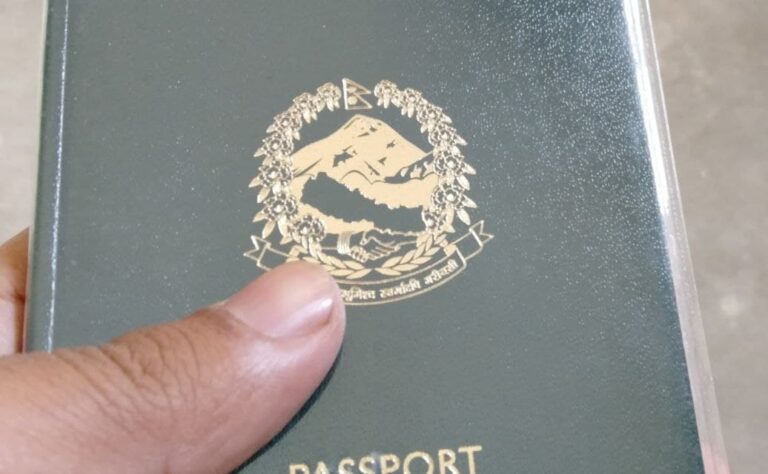
Nepal government has started issuing electronic passports (e-passports) starting today. Minister for Foreign Affairs Narayan Khadka is scheduled to unveil the e-passport amid a function at the new building of the Department of Passports (DoP) located at Tripureshwor.
The e-passport is currently in practice internationally as the International Civil Aviation Authority (ICAO) defines e-passport as the most secure type of passport.
Spokesperson of the Department of Passports Sharad Raj Aran informed that the department plans to begin the distribution of e-passport in full swing within a week.
“For the first few days, we will distribute only limited e-passports daily,” said Aran.
To date, Nepal has been issuing Machine Readable Passport (MRP). In order to move the data of the MRP system to the new system and to make the passport printing work effective, the department is preparing to distribute both types of passports at the beginning.
With this, the government will gradually replace existing machine-readable passports (MRPs) in the next few years.
On December 20, 2020, the DoP had entered into a purchase agreement with IDEMIA Identity and Security France SAS for the printing of e-passport at a cost of Rs 2.48 billion. According to the agreement, the company had to complete all the work to make the distribution of e-passport ready within 10 months.
An e-passport has an embedded electronic microprocessor chip. It uses contactless smart card technology, including a microprocessor chip and antenna to power the chip as well as for communication. The chip contains personal details including biometric information of a person that authenticates the identity of the passport holder.
Spokesperson Aran said that e-passport is a very secure passport-type as no one can change any details after locking the microprocessor chip with those details.
The department is preparing to issue seven types of e-passports. At present, there are six categories of passports – diplomatic, official, temporary, seaman’s record book, general and travel documents.
However, a new passport category called “peacekeepers’ passport” is available to ambassadors, permanent representatives, consul-generals, or personal assistants and unclassified staff accompanying staff at Gazetted level. At the end of their term, such personal assistants and unclassified employees should return the passport to the department.
Similarly, DoP will issue ordinary e-passports to Nepali citizens which must be collected by the person concerned within one year of its issuance, otherwise, the department will cancel it. Spokesperson Aran informed that a 66-page ordinary passport will be issued for those who have to go abroad repeatedly and 34 pages for others.
Meanwhile, the new passports will come in new colors with the cover of ordinary passports, which is currently green, turned into chocolate-brown. Diplomatic passports will have a crimson cover, official passports navy-blue, and peacekeepers’ passports will come in orange color. Travel documents will be black, temporary passports chocolate-brown and seaman’s record book slate-brown.






